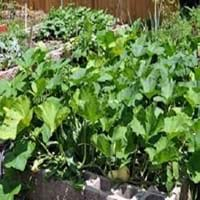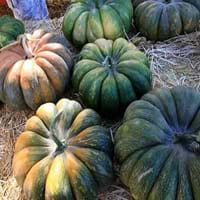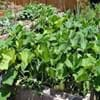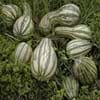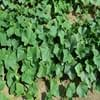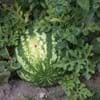Origin
North America, Mexico, Central America, South America
Hybrid origin, North America, Central America, South America
Types
Neck, Really Big Hybrid, Waltham
Not Available
Habitat
Cultivated Beds
Fields, Homesteads
USDA Hardiness Zone
9-11
3-11
Sunset Zone
A1, A2, A3, H1, H2, 1a, 1b, 2a, 2b, 3a, 3b, 4, 5, 6, 7, 8, 9, 10, 11, 12, 13, 14, 15, 16, 17, 18, 19, 20, 21, 22, 23, 24
A1, A2, A3, H1, H2, 1a, 1b, 2a, 2b, 3a, 3b, 4, 5, 6, 7, 8, 9, 10, 11, 12, 13, 14, 15, 16, 17, 18, 19, 20, 21, 22, 23, 24
Habit
Prostrate/Trailing
Prostrate/Trailing
Flower Color
Yellow, Gold
Yellow, Gold
Flower Color Modifier
Bicolor
Bicolor
Fruit Color
Peach, Tan
Olive, Orange Red, Sandy Brown
Leaf Color in Spring
Green, Dark Green
Light Green
Leaf Color in Summer
Green, Dark Green
Dark Green
Leaf Color in Fall
Green, Dark Green, Yellow green
Green, Dark Green, Yellow green
Leaf Color in Winter
Not Available
Not Available
Leaf Shape
Heart-shaped
Maple shaped
Plant Season
Summer, Fall
Fall
Sunlight
Full Sun
Full Sun
Growth Rate
Very Fast
Fast
The pH of Soil
Neutral
Acidic, Neutral
Soil Drainage
Well drained
Well drained
Bloom Time
Early Summer, Summer, Indeterminate
Indeterminate
Tolerances
Drought
Drought
Where to Plant?
Container, Ground, Pot
Ground
How to Plant?
Seedlings
Seedlings
Plant Maintenance
Medium
Medium
Watering Requirements
Average Water Needs
Average Water Needs
In Summer
Lots of watering
Lots of watering
In Spring
Moderate
Moderate
In Winter
Average Water
Average Water
Soil pH
Neutral
Acidic, Neutral
Soil Drainage Capacity
Well drained
Well drained
Sun Exposure
Full Sun
Full Sun
Pruning
Remove damaged leaves, Remove dead branches, Remove dead leaves, Remove dead or diseased plant parts
Prune for shortening long shoots, Remove damaged leaves, Remove dead branches, Remove dead leaves
Fertilizers
Apply 10-10-10 amount, Apply 12-12-12 amounts, Nitrogen, Phosphate, Potassium
All-Purpose Liquid Fertilizer, Use 6-6-6 amounts
Pests and Diseases
Red blotch
Striped cucumber beetles
Plant Tolerance
Drought
Drought
Flower Petal Number
Single
Single
Foliage Texture
Coarse
Coarse
Foliage Sheen
Matte
Matte
Attracts
Ants, Bees
Not Available
Allergy
Dermatitis
Red eyes, Respiratory problems
Aesthetic Uses
Not Used For Aesthetic Purpose
Not Used For Aesthetic Purpose
Beauty Benefits
Glowing Skin, Good for skin and hair
Not Available
Environmental Uses
Air purification
Air purification
Medicinal Uses
Antiasthamatic, anti-cancer, anti-inflammatory, Cardiovascular problems, cholesterol-lowering, constipation, Diabetes, Fiber, High blood pressure, Immunity, Manganese, Rich in Potassium, Vitamin A, Vitamin C, Vitamin E
Cancer, constipation, Diarrhea
Part of Plant Used
Flowers, Fruits, Leaves, Seeds
Fruits
Other Uses
For making oil, Used As Food
Used As Food
Used As Indoor Plant
Yes
No
Used As Outdoor Plant
Yes
Yes
Garden Design
Edible, Herb / Vegetable, Vine
Edible, Herb / Vegetable
Botanical Name
CUCURBITA moschata 'Quantum'
CUCURBITA moschata 'Fairytale'
Common Name
Butternut Squash
Fairytale Pumpkin
In Hindi
Butternut Squash Plant
कद्दू
In German
Butternut Squash-Anlage
Fairytale Kürbis
In French
Courge musquée Plante
Pumpkin Fairytale
In Spanish
Planta de la calabaza de Butternut
calabaza fairytale
In Greek
Κολοκύθια Φυτών
παραμύθι κολοκύθας
In Portuguese
Butternut Squash planta
abóbora do conto de fadas
In Polish
Piżmowa roślin
Fairytale dyni
In Latin
Planta butternut cucurbitae
Fairytale Cucurbita
Phylum
Magnoliophyta
Not Available
Class
Magnoliopsida
Not Available
Order
Violales
Not Available
Family
Cucurbitaceae
Cucurbitaceae
Genus
Cucurbita
Cucurbita
Clade
Angiosperms, Eudicots, Rosids
Not Available
Tribe
Not Available
Not Available
Subfamily
Papilionoideae
Cucurbitoideae
Number of Species
Not Available
Season and Care of Butternut Squash and Fairytale Pumpkin
Season and care of Butternut Squash and Fairytale Pumpkin is important to know. While considering everything about Butternut Squash and Fairytale Pumpkin Care, growing season is an essential factor. Butternut Squash season is Summer and Fall and Fairytale Pumpkin season is Summer and Fall. The type of soil for Butternut Squash is Loam and for Fairytale Pumpkin is Loam while the PH of soil for Butternut Squash is Neutral and for Fairytale Pumpkin is Acidic, Neutral.
Butternut Squash and Fairytale Pumpkin Physical Information
Butternut Squash and Fairytale Pumpkin physical information is very important for comparison. Butternut Squash height is 7.62 cm and width 50.80 cm whereas Fairytale Pumpkin height is 30.00 cm and width 240.00 cm. The color specification of Butternut Squash and Fairytale Pumpkin are as follows:
Butternut Squash flower color: Yellow and Gold
Butternut Squash leaf color: Green, Dark Green
Fairytale Pumpkin flower color: Yellow and Gold
- Fairytale Pumpkin leaf color: Light Green
Care of Butternut Squash and Fairytale Pumpkin
Care of Butternut Squash and Fairytale Pumpkin include pruning, fertilizers, watering etc. Butternut Squash pruning is done Remove damaged leaves, Remove dead branches, Remove dead leaves and Remove dead or diseased plant parts and Fairytale Pumpkin pruning is done Prune for shortening long shoots, Remove damaged leaves, Remove dead branches and Remove dead leaves. In summer Butternut Squash needs Lots of watering and in winter, it needs Average Water. Whereas, in summer Fairytale Pumpkin needs Lots of watering and in winter, it needs Average Water.
